SUMMARY
This is AI generated summarization, which may have errors. For context, always refer to the full article.

BUTUAN, Philippines – In the Philippines, where typhoons, earthquakes, and other natural hazards are a grim reality, social media has become a double-edged sword.
Frontline government agencies in the disaster-prone Caraga region, like the Philippine Atmospheric, Geophysical, and Astronomical Services Administration (PAGASA), agree that while social media can be a vital tool for spreading life-saving advisories, it can also serve as a breeding ground for false information that sows confusion and impedes disaster response.
Ver Lancer Galanda, chief meteorological officer of PAGASA-Butuan, said they have lost count of the false reports they have received through Messenger and Facebook regarding typhoons, despite no credible threats being monitored.
“Fake news like this can create panic and fear. With social media, we can’t avoid this since information spreads quickly,” he said.
The most recent disaster that occurred in Caraga was the Magnitude 7.4 offshore earthquake in Hinatuan, Surigao del Sur, on December 2, 2023. The calamity was not spared from false information, prompting newsrooms to debunk claims.
Rappler fact-checked the misrepresentation of old “earthquake lights” photos in Surigao del Sur. The post claimed to show flashes of light in the sky during an earthquake, supposedly occurring in Hinatuan, Surigao del Sur after the December 2 quake.
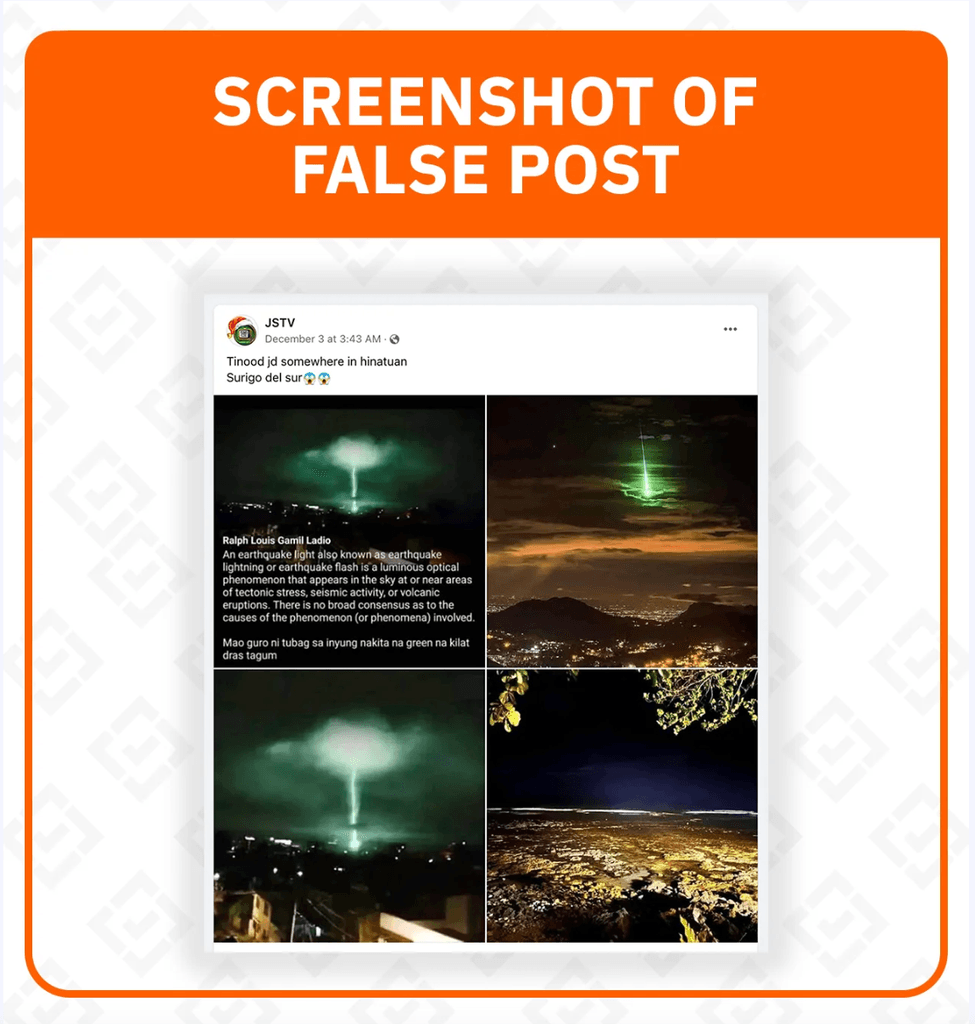
However, three of the photos used in the post were not from Hinatuan nor from that year – the images were taken from photos and videos captured in India and Mexico in 2015 and 2017, respectively. The fourth photo in the post, while taken in Hinatuan, Surigao del Sur, depicted coastal waters receding in an unspecified area following the December 2 quake.
One News PH also fact-checked a claim about the discovery of a “shokoy,” a mythical human-like sea creature there.
Days later, the Davao-based online newsgroup MindaNews debunked false reports of a magnitude 7.2 earthquake and tsunami supposedly hitting Mindanao on December 6.
Lina, not her real name, a resident of Barangay Aquino in Hinatuan, set up a makeshift tent on higher ground with her family three days after the earthquake, enduring the cold night and insect bites instead of staying in her house.
“Our house was not damaged, but I am still afraid for my family because of the posts on Facebook mentioning that a big tsunami will happen anytime,” she said.
While the Philippine Institute of Volcanology and Seismology (Phivolcs) released an advisory on a tsunami alert right after the earthquake, it announced around 3 am on December 3 that the tsunami warning had been lifted, and no further warnings were issued afterwards.
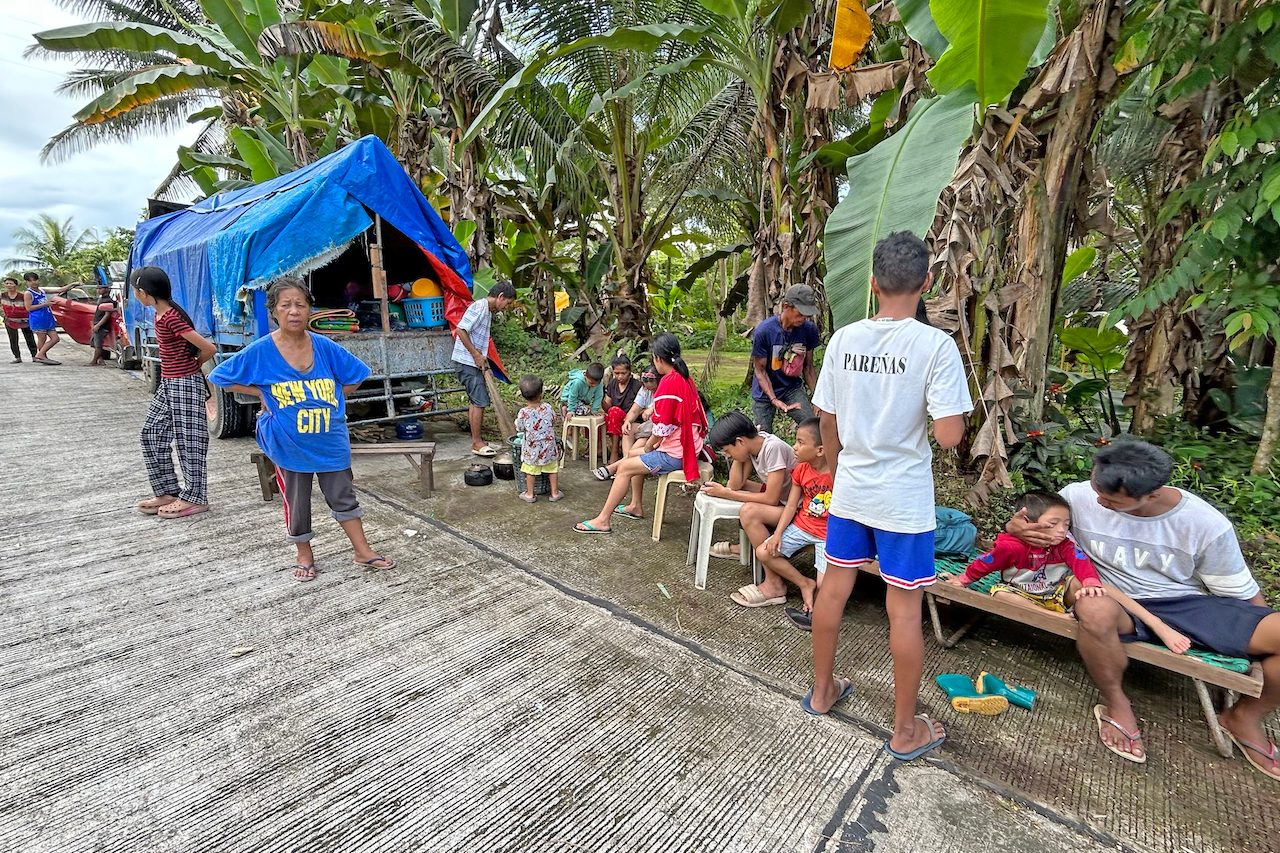
Four days after the earthquake, social media buzzed with a claim suggesting that five active underwater volcanoes in Hinatuan triggered the quake. However, Phivolcs-Davao quickly debunked this, showing how such false information can provoke mass hysteria and anxiety.
Unreliable source
Besides Phivolcs, the state agency offering updates during earthquakes and volcanic eruptions, there’s The Watchmen’s Earth and Space Connection. With 1.1 million Facebook followers and 867,009 likes, its popularity might imply reliability, but a geologist has cautioned against its credibility.
On December 5, 2023, three days after the earthquake in Hinatuan, the page posted that the “Manila trench and Philippine trench are moving,” garnering 23,600 reactions, 19,200 shares, and 1,400 comments, with most pleading for divine mercy and protection
For Jonel Dalona, a Caraga-based geologist, it wasn’t the first case, as he and his colleagues had already debunked this Facebook page many times before.
“For several years now, my fellow geologists and I have been debunking this page. The earthquakes in the Philippines are normal, and there is no reason to panic. The convergence of plates happens daily, and this process takes millions of years,” Dalona said.
He reminded netizens through a Facebook post not to believe in that page and follow advice from government agencies only since they have studied the matter for years, unlike the page in question, which relies solely on mere Google searches.
One of those who shared the content was Marjolyn Barcenilla, a resident of Trento, Agusan del Sur. She said that upon reading the post, she felt alarmed as it was her first time to experience multiple aftershocks.
“You know, when you are in that kind of situation, it feels like everything people say is taken as fact,” Barcenilla said. She added that she was swayed by the significant number of reactions to the post, and the presentation of photos and captions heightened the alarming nature of the information.
With a bio note, “This page is for reports on earthquakes, solar flares, and all space activity that affects our Earth,” it is managed by five people, two of whom are from the Philippines. The page has a history of being fact-checked by Rappler during the Taal Volcano eruption in January 2020.
Politics and propaganda
While false information may create panic and fear, another aspect of it could also be used to foster distrust in the government’s relief efforts after the disaster, as acknowledged by officials of Dinagat and Surigao del Norte provinces.
Top officials in these two hardest-hit provinces in Mindanao, where Typhoon Odette (Rai) made landfall on December 16, 2021, attributed the circulating disinformation during the disaster response to political ambitions, given that it occurred five months before the 2022 national and local elections.
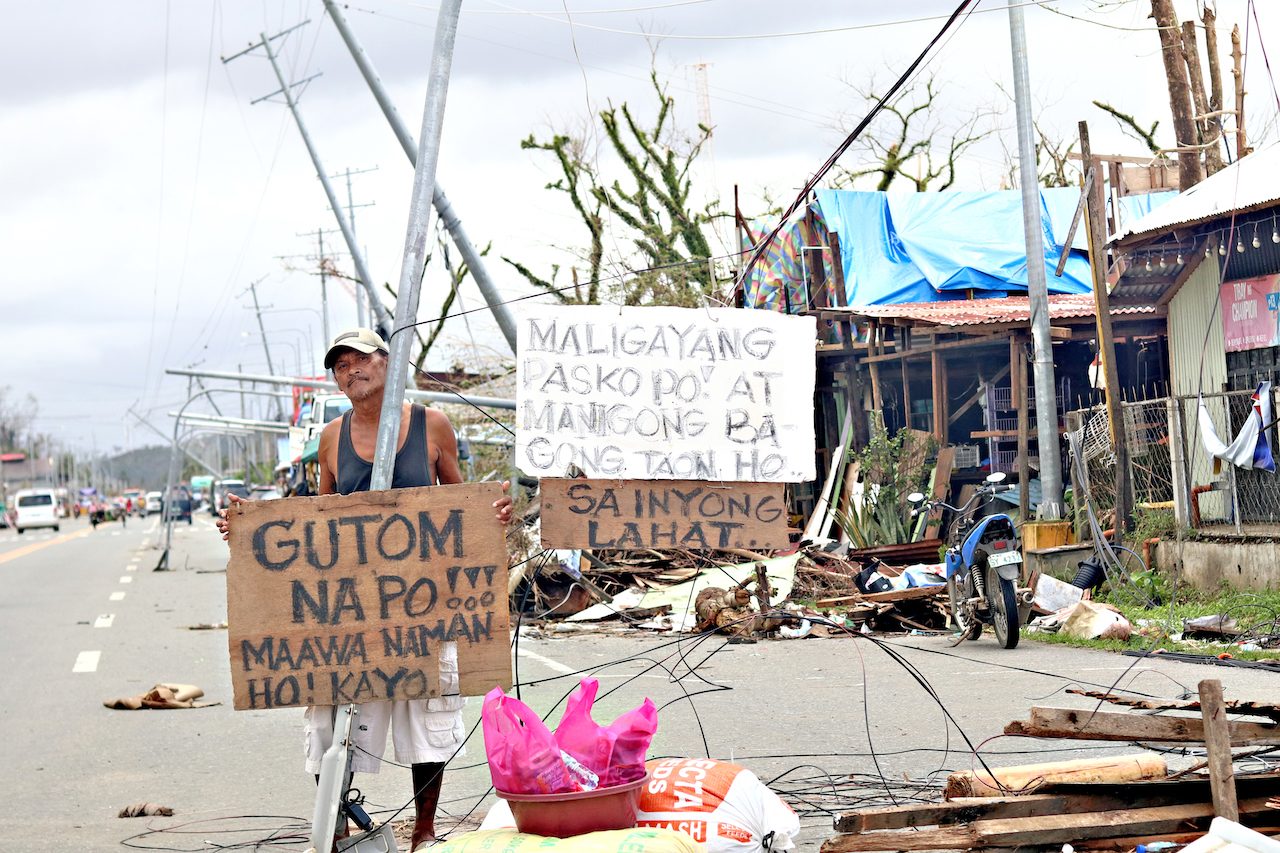
Jeff Crisostomo, former information officer and provincial government spokesperson of Dinagat Island, took to Facebook on January 10, 2022, and declared that the information about the then-governor Arlene “Kaka” Bag-ao ordering a lockdown amid the devastation of Odette, was false and intended to hinder the flow of relief operations and recovery initiatives.
On March 31, 2022, just three months after Odette, the Provincial Information Office of Dinagat called out a certain Carl Brian Gonzaga, who claimed that donated relief goods were mishandled and disposed of by the provincial government. Gonzaga also alleged that Army soldiers were not treated well, and so they no longer distributed food to the needy in the island province.
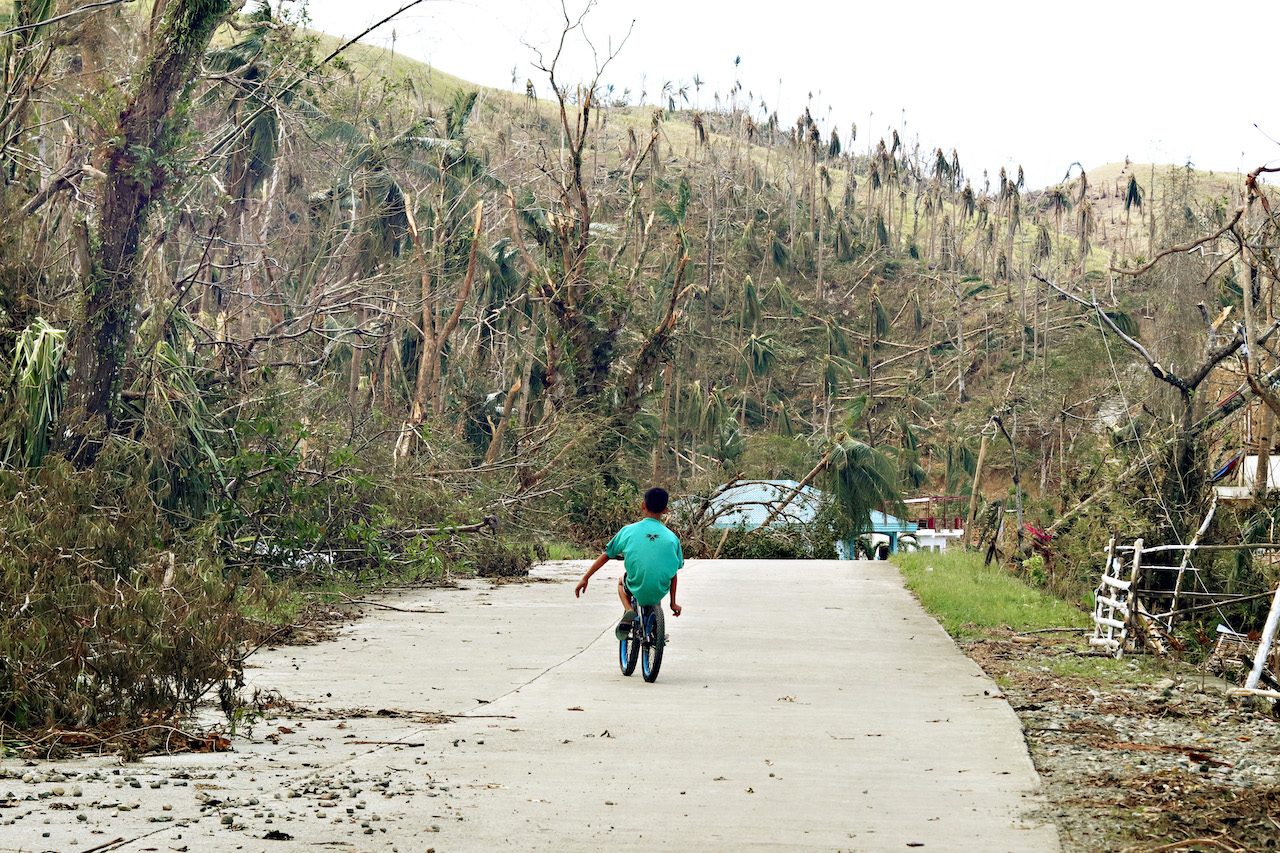
The PIO rebutted such claims, stating all relief goods were distributed properly via the local government or directly to communities, all information was provided on its Facebook page, and public documents were available at the Provincial Emergency Operations Center.
The Dinagat PIO said at that time: “While we are now in the campaign period for local elections, we believe that free discourse is important when it comes to issues related to governance. That is part of democracy. What is not part of this is creating and sharing false information and hearsay. Let us leave politics in the campaign and not in the regular business of governance and service to the people. Dinagatnons deserve better.”
On December 23, 2021, Surigao del Norte 1st District Representative Francisco Jose “Bingo” Matugas II addressed allegations that donated relief items were held and stored at the command centers in Dapa Port and Sayak Airport in Del Carmen instead of immediately distributed to victims. Such charges implied that the items were repackaged to falsely claim credit for the relief goods.
“Fake news harms the actual work that is being done. It destroys the public’s trust in the government’s communication relays and its coordination tasks. It threatens the relationships being built between the public and private sectors. In the end, it harms both the relief workers and the people who desperately need relief,” he said.
Ella, who requested not to be named, said that among the deciding factors for her vote were the posts circulating online about the local government’s inefficiencies after Odette.
“Their reign (Matugas) has been long, but after Odette, they seemed absent. I’ve read many posts circulating about how incompetent they are. Somehow, Odette made us realize who should be voted for,” she said.
In the 2022 elections, officials like Bag-ao in Dinagat and members of the Matugas political dynasty, including the then-Surigao del Norte governor Francisco Matugas, the then-Surigao City mayor Ernesto Matugas Jr. and his father and vice mayor Ernesto Sr., lost.
The only Matugas victors for key positions in the province are Francisco’s wife Sol who won as mayor of General Luna town, and son and namesake Francisco Jose II, who secured a representative’s seat.
Volunteer relief
Michael Piencenaves, who was involved in organizing relief efforts for Odette survivors, pointed to Facebook posts that suggested using Siargao’s backdoor for relief efforts due to the alleged confiscation of relief goods at the Dapa Port. The relief items were supposedly given to selected beneficiaries.
“Those rumors led to us choosing a direct boat trip to Halian, Del Carmen, instead of Dapa and shipping our goods to Del Carmen directly. Of course, at that moment, we didn’t have time to check and verify information given the emergency and various other considerations, so we did what we had to based on limited info,” Piencenaves said.
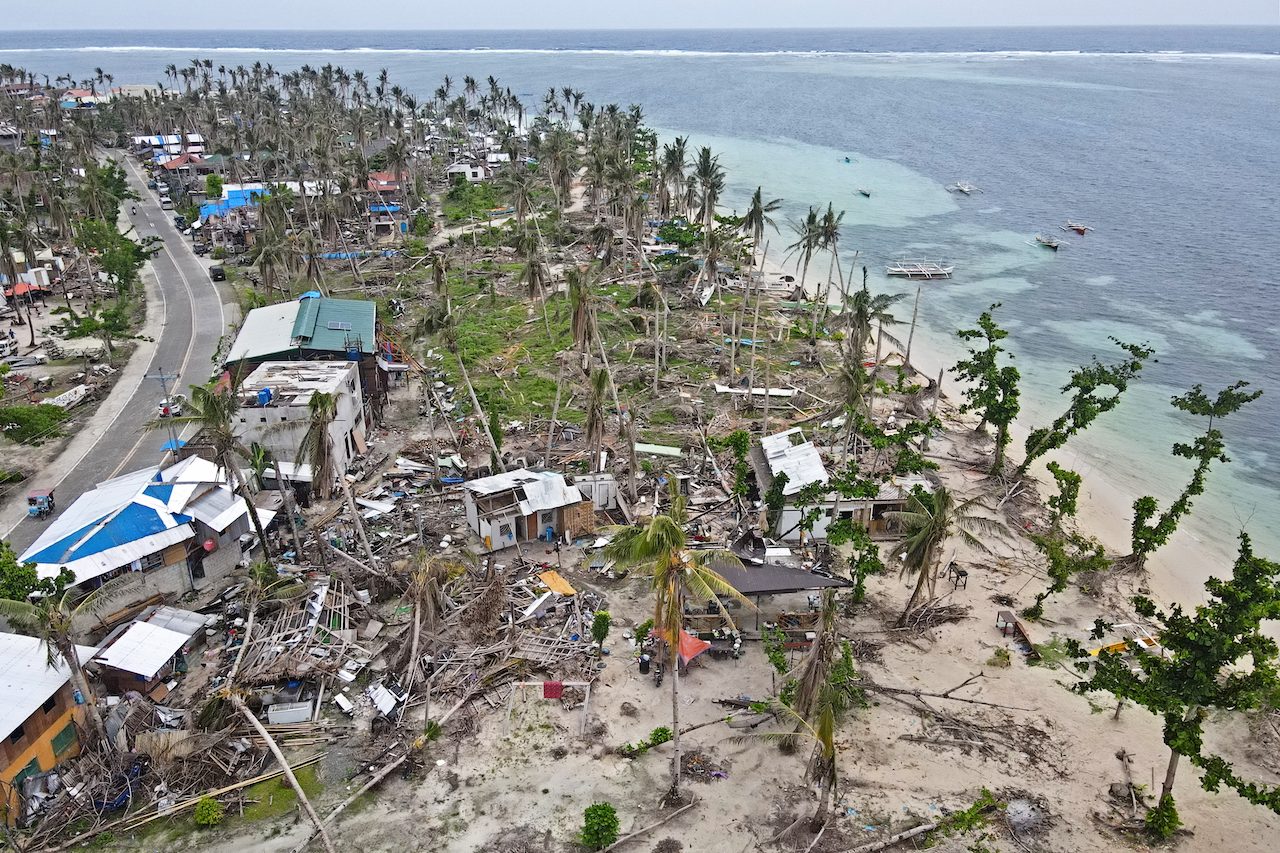
Richmond Seladores, a volunteer in the relief efforts in Siargao, said the disinformation only worsened the situation in the field.
“It was hard on the ground, and the false information coming in didn’t help at all. It was disheartening because we’re all exhausted, sleep-deprived, and with the issues on social media, it somehow undermined our efforts,” Seladores said.
Improper allocation
Liza Mazo, Office of Civil Defense-Caraga director, said false information primarily leads to panic, resulting in uncoordinated and inefficient responses which contribute to unnecessary fear and strain limited resources during evacuations.
She recalled a troubling situation where residents, influenced by a Facebook post and forwarded Messenger text, hastily evacuated, despite heavy rain, following an earthquake in Cagwait, Surigao del Sur in December 2023.
Mazo said some had children with them. Phivolcs subsequently said there was no tsunami threat.
“Some even called the barangay to request evacuation. At that time, the vehicles and personnel were limited as they were still distributing relief goods. But still, they went there and evacuated them, when the priority should have been on the relief aid distribution, not on evacuation, as there was no tsunami threat to begin with,” Mazo said.
Mazo said that while people need to verify information sources, she also emphasized that it is the government’s responsibility to provide information and education campaigns (IEC) for disaster preparedness.
“We need to empower those at the barangay levels because they have direct access to the communities. IECs should include guidance on which agencies to rely on during disasters like PAGASA, Phivolcs, and legitimate media sources to prevent panic and unnecessary fear,” she said. – Rappler.com
Ivy Marie Mangadlao is a community journalist writing for Mindanews and an Aries Rufo Journalism fellow for 2023-2024.
Add a comment
How does this make you feel?





![[DECODED] The Philippines and Brazil have a lot in common. Online toxicity is one.](https://www.rappler.com/tachyon/2024/07/misogyny-tech-carousel-revised-decoded-july-2024.jpg?resize=257%2C257&crop_strategy=attention)




There are no comments yet. Add your comment to start the conversation.